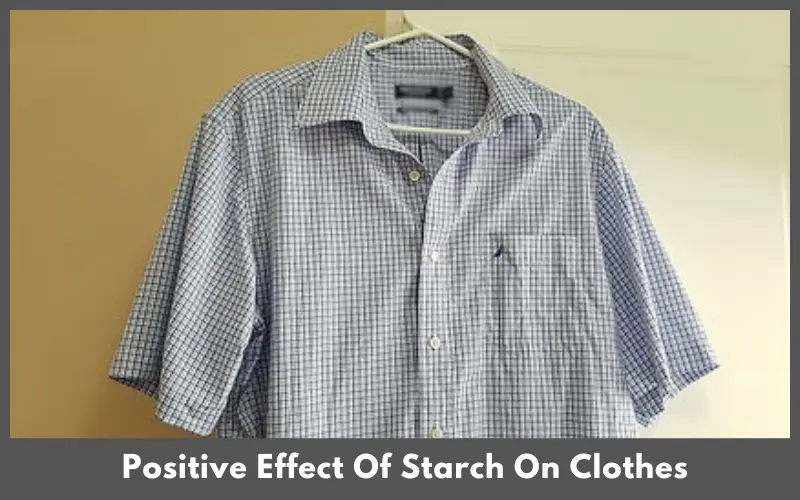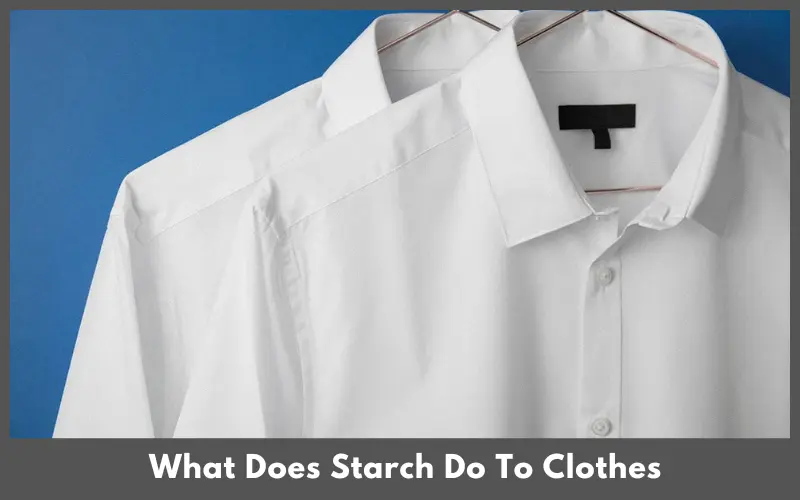Starching is an ancient process that is still popular in the modern era, particularly among dry cleaners. But what does starch do to clothes? Starching provides a harder look to your clothes and improves their resistance to stains and wrinkles.
It also helps in ironing and removing stains very easily. However, if you want to enjoy the exciting benefits of starching, you have to understand how to starch clothes properly at home. Otherwise, starching can fray the cuffs and collars of your shirt and cause you skin irritation.
Table of Contents
What Does Starch Do To Your Clothes?
Starch is usually made from various plants including rice, corn, wheat or potato, and is used as a detergent aid. It is useful for linen or cotton garments to give the garment body and shape. Starch also creates stiffness, crisp, and professional finish in fabric to make it easier to iron and harder to wrinkle.
If you starch your clothes regularly, they will hold the freshly pressed and stain-resistant shape for a long time. It also helps clean and prevent stains on clothes easily. Starch is used on cuffs, and collars of clothing to give fabric a sharp edge, make the collars stand tall, and help pleats hold the form.
Positive Effect Of Starch On Clothes
If you starch clothes after dry cleaning, they will look crispier, stiffer, more appealing, and have fewer wrinkles. Starch helps iron clothes easily and remove stains and dirt from clothes easily without damaging the clothing. It seals the cloth’s fibers, protects it from stains and extends the intervals between dry clean. Starch also makes the clothes more resistant to wear and retains brightness for a longer time. Starch is an eco-friendly material that is non-toxic to the environment.

Negative Effects Of Starch On Clothes
Though starching is beneficial for clothes, it has some negative effects on skin and fabrics. If you have sensitive skin, starch can cause you irritation and scratch. It can reduce your clothes’ lifespan and fray and break the threads. If you apply heavier starch on dry-cleaned clothes, it can cause your clothes to wear out over time.

The firm starch can snap the fibers instead of bending and fraying the cuffs and collars eventually. So you can experience itch after wearing your shirt for a long time. So if you want to avoid damaging your clothes, discuss with a dry cleaner to determine if you should use lighter or heavier starch.
Also Read: What Temperature Kills Mold?
How To Properly Starch Clothes At Home?
If you want to starch your clothes at home like professionals, collect a large tub, spray bottle, iron, clothes hanger, ironing board with cover, liquid starch, and laundry sizing. Then follow these steps:
Prepare Starch Solution
You can select liquid starch, aerosol spray-on starch, powdered starch, or made solution at home to coat your cloth. If you want to make the clothes straight and crisp, use liquid starch. To prepare the solution at home, fill a large tub with 2 cups of liquid starch and 3 gallons of water.
Dip The Clothes in A Solution
Dip your clothes into clothes in the solution completely. If you spray aerosol canned starch or thinned liquid starch on your clothes, it won’t get the crispness you desire. So dip your freshly washed clothes in starch solution and make sure the whole clothes are saturated.
Wiring The Clothes And Hang
Then wiring out your clothes and hanging them out to dry. But don’t dry the shirt completely as you will need to iron the damp clothes. However, if you don’t want to iron the clothes immediately, you can mist the clothes.
Prepare Ironing
Use a strong and contoured shape iron board to crisp clothes avoiding unwanted creases. Then set the highest temperature or around 400 degrees to iron your linen or cotton clothes. If you want the crispest result, set adjustable and non-stick soleplate temperature on your iron. But don’t apply the steam setting.
Apply The Heat
First, iron both sides of the collar using the collar flat on the ironing board, and then iron on the yoke, shoulder area, and a narrow end. Iron from one shoulder to the other shoulder through the back of the yoke. Lay one sleeve level and extend on the ironing board to move to sleeves. Make the shirt taut by holding the cuff in one hand and then ironing the armpit through the bottom seam.
Iron wrinkles into the sleeve’s top, cuff, and other sleeve. Iron the shirt’s body, and wrinkle areas again. If you leave iron in one place for a long time, starch-soaked clothes can cause scorch quickly. So don’t do so.
Hang The Cloth And Dry
After ironing, hang your crisp clothes on a hanger to make them dry completely. Remember, a damp cloth will wrinkle quickly.
FAQs on What Does Starch Do To Clothes
Does Starch Make Clothes Look New?
Yes, starch can make clothes look new as it binds the fabric fibers together. It also gives the cloth a crisp finish and keeps the collars standing tall. So if you want to restore or retain the new look of your clothing for a long time, you can starch it.
How Long Does Starch Last On Clothes?
Starch can sit on clothes for around 1 to 5 weeks. However, the exact time may vary depending on how frequently you use the clothing and how properly you starch the clothing.
How Often Should You Starch Your Shirt?
You shouldn’t starch your shirt regularly. If you starch your shirt too often, its fiber can fray out or deteriorate. Starch can also affect your shirt’s cuffs and collars. If you still want to heavily starch your shirt frequently, soak and wash the clothing to remove the starch layer before applying another round. This way you can retain the longevity of your shirt.
Final Words
Starch does an excellent job on clothes as it makes the cloth stiff, adds crispness, and creates a high resistance to soiling and wrinkling. It also makes it easier to remove stains and helps to hold press appearances for a longer time. However starch has some drawbacks including wearing out the cloth or making the skin itchy.
However, you can avoid the consequences and enjoy new-looking and stiff clothes by following the process of starching your clothes and discussing them with professionals.

